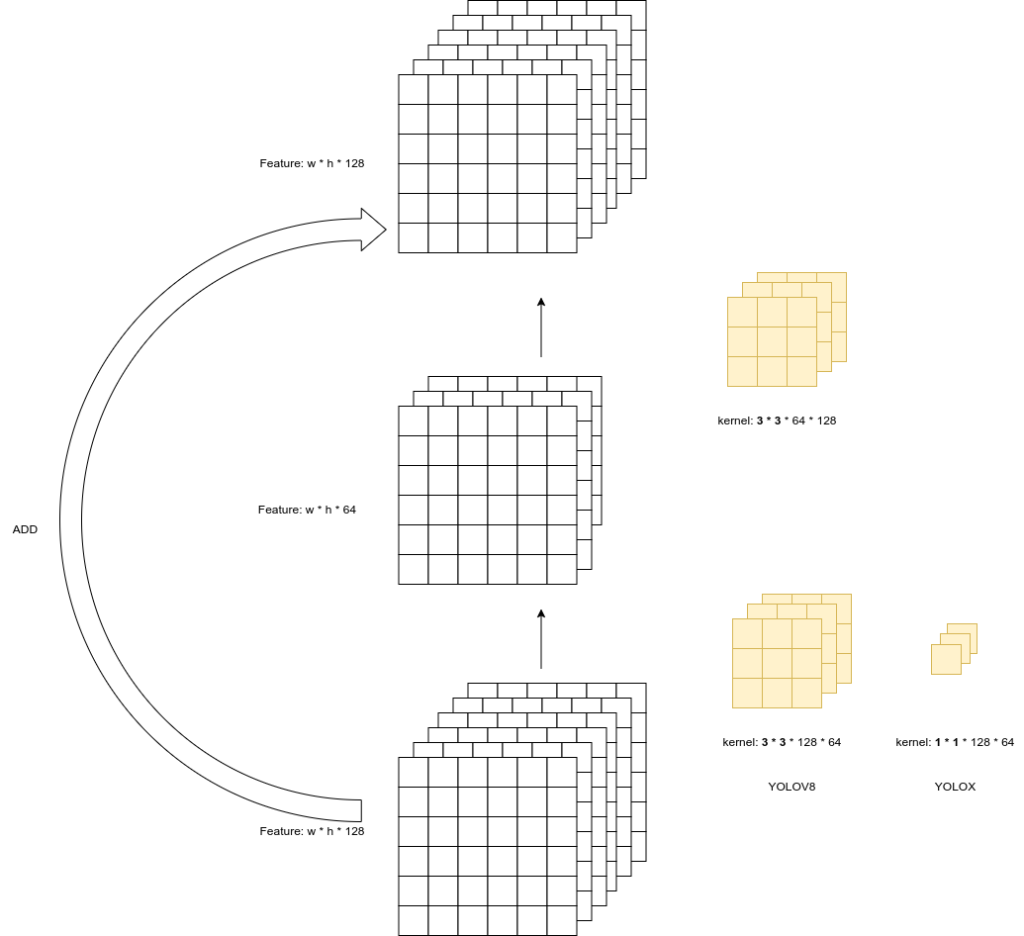YOLOX
# Bottleneck的中文意思是瓶颈,瓶颈的作用是将输入的特征图的通道数从in_channels变为out_channels
# 之所以使用瓶颈,是因为在yolov5中,使用瓶颈可以减少计算量,同时也可以提高模型的精度
class Bottleneck(nn.Module):
# Standard bottleneck
def __init__(
self,
in_channels, # 输入通道数
out_channels, # 输出通道数
shortcut=True, # 是否使用shortcut
expansion=0.5, # 通道数的扩张倍数
depthwise=False, # 是否使用深度可分离卷积
act="silu", # 激活函数,默认使用silu,也可以使用relu或者lrelu,即LeakyReLU
):
super().__init__()
hidden_channels = int(out_channels * expansion) # hidden_channels = out_channels // 2
Conv = DWConv if depthwise else BaseConv # 卷积层使用DWConv还是BaseConv,其中DWConv是深度可分离卷积
self.conv1 = BaseConv(in_channels, hidden_channels, 1, stride=1, act=act) # 1x1卷积,将通道数降低一半
self.conv2 = Conv(hidden_channels, out_channels, 3, stride=1, act=act) # 3x3卷积,将通道数恢复到原来的大小
self.use_add = shortcut and in_channels == out_channels
# 是否使用shortcut,如果输入输出通道数相同,则使用shortcut,否则不使用,这里的shortcut是指y=y+x,即将输入的特征图和卷积后的特征图进行相加
def forward(self, x):
y = self.conv2(self.conv1(x)) # 1x1卷积,3x3卷积
if self.use_add: # 如果使用shortcut,则将输入的特征图和卷积后的特征图进行相加
y = y + x # shortcut
return y
# Bottleneck的数据流图如下:
# x -> conv1(1x1) -> conv2 -> y
# |______________________|
# 其中conv1是1x1卷积,conv2是3x3卷积
# W*H*C -> W*H*C/2 -> W*H*C -> W*H*C
# 通道数从C变为C/2,然后再变为C
YOLOV8
class Bottleneck(nn.Module):
"""Standard bottleneck."""
def __init__(self, c1, c2, shortcut=True, g=1, k=(3, 3), e=0.5):
"""Initializes a bottleneck module with given input/output channels, shortcut option, group, kernels, and
expansion.
"""
super().__init__()
c_ = int(c2 * e) # hidden channels
self.cv1 = Conv(c1, c_, k[0], 1)
self.cv2 = Conv(c_, c2, k[1], 1, g=g)
self.add = shortcut and c1 == c2
def forward(self, x):
"""'forward()' applies the YOLO FPN to input data."""
return x + self.cv2(self.cv1(x)) if self.add else self.cv2(self.cv1(x))



发表回复